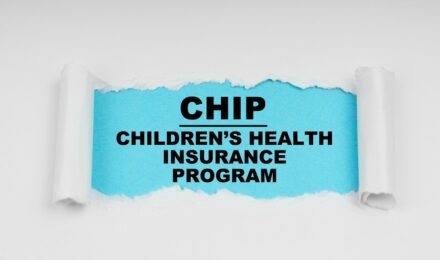Contents
- 1 The Child Tax Credit: A Financial Lifeline
- 2 Economic Challenges Addressed by the CTC
- 3 Middle-Income Families and the Pandemic’s Impact
- 4 Reducing Child Poverty Through Tax Credits
- 5 Financial Relief and Cost Considerations
- 6 Promoting Geographic and Economic Mobility
- 7 Strengthening Local Economies
- 8 Addressing Population Disparities
- 9 Encouraging Small Business Development
- 10 A Brighter Future for Families
- 11 Resources
Raising a family is both rewarding and financially demanding. Yet, the tax benefits available to families can significantly ease these burdens. From the Child Tax Credit (CTC) to its enhanced versions introduced during crises, these measures are not mere policies—they are lifelines offering hope and stability.
The Child Tax Credit: A Financial Lifeline
The Child Tax Credit (CTC) is nothing short of crucial for families navigating the expenses of raising children. It’s more than a tax break; it’s a pivotal support mechanism. Initially designed to offset child-rearing costs, its significance soared during the pandemic. The Enhanced Child Tax Credit addressed widespread financial upheaval, recognizing the crushing pressures of inflation, medical emergencies, and unemployment.
Economic Challenges Addressed by the CTC
Economic instability wreaks havoc on families, especially those with children. Parents unable to work remotely faced an unbearable choice—lose income or neglect caregiving. The Enhanced CTC intervened, targeting those most affected and ensuring children—the often-overlooked victims of financial crises—had access to essentials. Isn’t it remarkable how one policy can act as both a cushion and a safety net?
Middle-Income Families and the Pandemic’s Impact
Who says economic struggles are exclusive to low-income households? Middle-income families, confronting unexpected job losses or prolonged illnesses, discovered how fragile financial stability could be. A single setback can unravel years of progress. The Enhanced CTC became a beacon of hope, enabling these families to sustain their standards of living. Isn’t preserving the middle class’s resilience pivotal to economic recovery?
Reducing Child Poverty Through Tax Credits
Child poverty casts a long shadow, limiting access to nutrition, education, and future opportunities. The Enhanced CTC has proven transformative, empowering parents to meet essential needs during crises like the pandemic. Whether it’s purchasing a computer for remote learning or covering medical bills, the support fosters brighter, healthier futures for children. Can you imagine the ripple effects of such a change?
Financial Relief and Cost Considerations
The CTC offers families between $3,000 and $3,600 per child annually—a truly transformative sum. Picture this: a parent finally paying off overdue medical bills or affording a much-needed computer for their child. The impact is profound. This lump-sum financial support doesn’t just stabilize finances—it unlocks possibilities.
Promoting Geographic and Economic Mobility
Sometimes, a family’s best chance at success requires a fresh start. The CTC empowers such bold decisions. Imagine living in a town where the main employer has vanished—relocation isn’t a luxury; it’s a necessity. The credit provides families the push they need to embrace better opportunities and brighter prospects.
Strengthening Local Economies
Tax benefits for families don’t just transform households—they rejuvenate communities. Increased spending breathes life into local businesses, creating vibrant, bustling economies. Local stores thrive, and sales tax revenues bolster government resources. Isn’t it amazing how one policy can catalyze widespread growth?
Addressing Population Disparities
Urban and rural families face distinct struggles, but the CTC bridges these gaps. Urban households contend with high costs and crime, while rural families often lack access to critical services. The credit’s adaptability ensures all families, regardless of location, receive meaningful support. Isn’t equity in policy implementation the hallmark of effective governance?
Encouraging Small Business Development
For parents with entrepreneurial dreams, the CTC can be a game-changer. It’s not a windfall, but it’s enough to kickstart a side hustle. Tools, materials, or even an online platform—the possibilities are endless. The credit doesn’t just alleviate financial stress; it sparks innovation and uplifts communities. Could this be the spark that ignites countless success stories?
A Brighter Future for Families
The Enhanced Child Tax Credit is not just policy; it’s a lifeline for countless families. It alleviates immediate pressures while paving the way for lasting change. Better healthcare, nutrition, and education become attainable, creating a ripple effect of hope and opportunity. Families aren’t merely surviving—they’re building futures brimming with promise.
Resources
- Internal Revenue Service (IRS) – Comprehensive information on eligibility and claiming the CTC. Visit irs.gov.
- Center on Budget and Policy Priorities – Research and analysis on the impact of tax credits on poverty reduction. Explore their insights at cbpp.org.
- Tax Policy Center – Detailed reports and policy discussions on tax benefits for families. Access their resources at taxpolicycenter.org.
Contents
- 1 The Child Tax Credit: A Financial Lifeline
- 2 Economic Challenges Addressed by the CTC
- 3 Middle-Income Families and the Pandemic’s Impact
- 4 Reducing Child Poverty Through Tax Credits
- 5 Financial Relief and Cost Considerations
- 6 Promoting Geographic and Economic Mobility
- 7 Strengthening Local Economies
- 8 Addressing Population Disparities
- 9 Encouraging Small Business Development
- 10 A Brighter Future for Families
- 11 Resources
Raising a family is both rewarding and financially demanding. Yet, the tax benefits available to families can significantly ease these burdens. From the Child Tax Credit (CTC) to its enhanced versions introduced during crises, these measures are not mere policies—they are lifelines offering hope and stability.
The Child Tax Credit: A Financial Lifeline
The Child Tax Credit (CTC) is nothing short of crucial for families navigating the expenses of raising children. It’s more than a tax break; it’s a pivotal support mechanism. Initially designed to offset child-rearing costs, its significance soared during the pandemic. The Enhanced Child Tax Credit addressed widespread financial upheaval, recognizing the crushing pressures of inflation, medical emergencies, and unemployment.
Economic Challenges Addressed by the CTC
Economic instability wreaks havoc on families, especially those with children. Parents unable to work remotely faced an unbearable choice—lose income or neglect caregiving. The Enhanced CTC intervened, targeting those most affected and ensuring children—the often-overlooked victims of financial crises—had access to essentials. Isn’t it remarkable how one policy can act as both a cushion and a safety net?
Middle-Income Families and the Pandemic’s Impact
Who says economic struggles are exclusive to low-income households? Middle-income families, confronting unexpected job losses or prolonged illnesses, discovered how fragile financial stability could be. A single setback can unravel years of progress. The Enhanced CTC became a beacon of hope, enabling these families to sustain their standards of living. Isn’t preserving the middle class’s resilience pivotal to economic recovery?
Reducing Child Poverty Through Tax Credits
Child poverty casts a long shadow, limiting access to nutrition, education, and future opportunities. The Enhanced CTC has proven transformative, empowering parents to meet essential needs during crises like the pandemic. Whether it’s purchasing a computer for remote learning or covering medical bills, the support fosters brighter, healthier futures for children. Can you imagine the ripple effects of such a change?
Financial Relief and Cost Considerations
The CTC offers families between $3,000 and $3,600 per child annually—a truly transformative sum. Picture this: a parent finally paying off overdue medical bills or affording a much-needed computer for their child. The impact is profound. This lump-sum financial support doesn’t just stabilize finances—it unlocks possibilities.
Promoting Geographic and Economic Mobility
Sometimes, a family’s best chance at success requires a fresh start. The CTC empowers such bold decisions. Imagine living in a town where the main employer has vanished—relocation isn’t a luxury; it’s a necessity. The credit provides families the push they need to embrace better opportunities and brighter prospects.
Strengthening Local Economies
Tax benefits for families don’t just transform households—they rejuvenate communities. Increased spending breathes life into local businesses, creating vibrant, bustling economies. Local stores thrive, and sales tax revenues bolster government resources. Isn’t it amazing how one policy can catalyze widespread growth?
Addressing Population Disparities
Urban and rural families face distinct struggles, but the CTC bridges these gaps. Urban households contend with high costs and crime, while rural families often lack access to critical services. The credit’s adaptability ensures all families, regardless of location, receive meaningful support. Isn’t equity in policy implementation the hallmark of effective governance?
Encouraging Small Business Development
For parents with entrepreneurial dreams, the CTC can be a game-changer. It’s not a windfall, but it’s enough to kickstart a side hustle. Tools, materials, or even an online platform—the possibilities are endless. The credit doesn’t just alleviate financial stress; it sparks innovation and uplifts communities. Could this be the spark that ignites countless success stories?
A Brighter Future for Families
The Enhanced Child Tax Credit is not just policy; it’s a lifeline for countless families. It alleviates immediate pressures while paving the way for lasting change. Better healthcare, nutrition, and education become attainable, creating a ripple effect of hope and opportunity. Families aren’t merely surviving—they’re building futures brimming with promise.
Resources
- Internal Revenue Service (IRS) – Comprehensive information on eligibility and claiming the CTC. Visit irs.gov.
- Center on Budget and Policy Priorities – Research and analysis on the impact of tax credits on poverty reduction. Explore their insights at cbpp.org.
- Tax Policy Center – Detailed reports and policy discussions on tax benefits for families. Access their resources at taxpolicycenter.org.






